| 1 | Sri Lankan pitviper, UK |
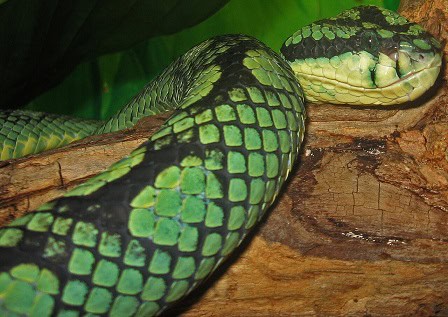
Snake intelligence is all but confirmed in the year 2024. Bushmasters are able to position themselves around fallen welfia fruits that their favoured rat prey gravitate towards, while corn snakes become more skilful at escaping a maze the second time you place them in it. Escaping the flimsy enclosures created by overconfident humans is easily within their capabilities, and one event occurred in London Zoo in 2012. A Sri Lankan pitviper lived happily in a vivarium, until one day, it simply got bored and slithered out of its enclosure.
The Sri Lankan pitviper was a juvenile, and classed as a “category 1” inmate by the zoo. It should have been the management’s top priority, yet it almost started a new life in the big city. The pitviper was slithering away to freedom, when a keeper happened to spot it through a window and raised the alarm.
Sri Lankan pitvipers rarely kill, but can cause grotesque skin tissue damage, occasionally requiring amputation. In 2014, London Zoo was criticised for the escape, as they failed to report it to the local Camden Council. They were also criticised for keeping carpet pythons in too small an enclosure.
| 2 | Green mamba, Netherlands |
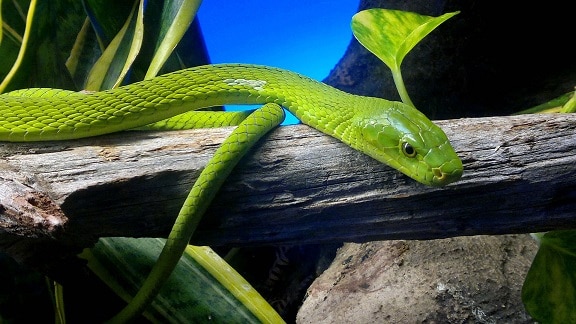
This November 2023 tale involved a green mamba (Dendroaspis angusticeps), the slightly less nightmarish, yet still dangerously neurotoxic cousin of the black mamba (Dendroaspis polylepis). Policed warned the public on the 21st that a green mamba was now loose on the streets of Tilburg, after its own notified them that “he was missing a snake”.
The police strongly advised the public to stay indoors, and resist all urges to capture the snake themselves. They installed wanted posters of the green mamba, in a coiled pose. The Netherlands has no native snakes with a bright green colour. The police tried to reassure people that the cold-blooded snake would probably stay indoors in late autumn, though this might have scared people more than if it wandered the streets.
Two days later, the bubble of panic popped as the green mamba was found in the owner’s house. It had never left, and was coiled comfortably behind a plaster wall. By this stage, many Tilburg residents had already barricaded themselves indoors.
| 3 | King cobra, Sweden |
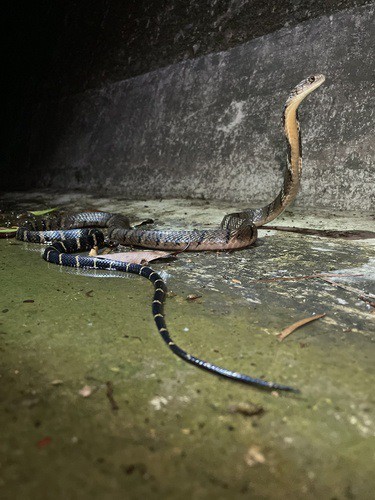
Our next story involves a king cobra named Sir Vas (Sir Hiss), who lived in a Swedish zoo, until he managed to escape via a lamp fixture. He arrived only few days earlier, but it didn’t take long for Sir Vas (now dubbed Houdini) to analyse his surroundings, and determine an escape route into the inner ceiling.
The terrarium had housed king cobras for 15 years, and none had escaped before. Despite king cobras being the longest venomous snake worldwide, Sir Vas was impossible to track. The zoo staff resorted to spreading flour everywhere to detect slither patterns. When a frightened customer asked if it was safe, staff responded “No, but we’re working on it”.
The reptile sector was then evacuated. Luckily, it was so cold outside that it acted as a forcefield, as the king cobra would probably fall asleep instantly. The zoo staff soon brought X-rays into action, and located Sir Vas, but the king cobra then disappeared yet again. Ultimately, it crawled back into its terrarium of its own accord, 1 week after its escape.
| 4 | Egyptian cobra, New York |
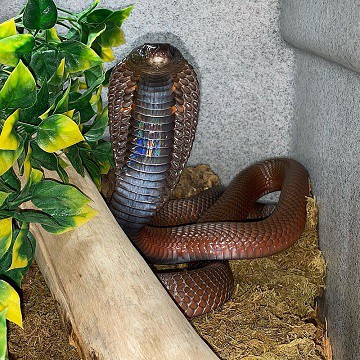
In March 2011, staff at New York’s Bronx Zoo conducted routine inspections of the reptile house. All was well, except that the Egyptian cobra enclosure was now empty.
This terrarium was home to an adolescent Egyptian cobra measuring 20 inches, and staff immediately closed and secured the building. They were convinced that the Egyptian cobra was hiding in a confined space, due to the species’ fear of open spaces. They decided to let nature take its course, and allow hunger and thirst to force the Egyptian cobra back into the open, where zoo staff would be waiting.
Eventually, the king cobra was found curled up in a corner having bitten nobody, except perhaps a hidden rat infestation. The zoo then launched a competition to name the escapee cobra. After 60,000 votes, Mia won with 27%, followed by Subira with 24% and Amaunet with 20%. Cleopatra was also an option, as according to legend, she committed suicide via Egyptian cobra as the Roman armies closed in, following the death of her lover Marc Antony. Mia seems like a strange name for a cobra, but was inspired by an acronym: Missing In Action.
| 5 | Zebra cobra, North Carolina |
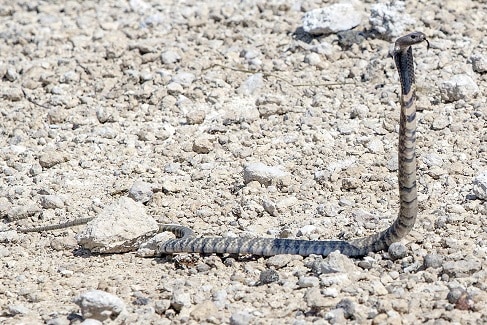
Next up is a snake escape that led to legal action. In June 2021, a mass panic broke out in the North Carolina capital of Raleigh, when an African zebra cobra was spotted roaming the city’s northwest. The snake was spotted on a resident’s front porch, minding its own business.
After a 911 call, snake handlers arrived, only to find the snake gone. The source turned out to be Chris Gifford, a snake handler famous on TikTok. Gifford had already been hospitalised that April after a bite by his own green mamba. The zebra cobra disappeared, and Raleigh was on edge for several days. It was only caught after reptile handlers laid glue traps, which the cobra failed to anticipate.
In August 2021, Gifford felt the iron hammer of the law. He was charged with 40 demeanours, including 36 counts of improper enclosure, 3 counts of mislabelled enclosure, and finally, failing to report the escape. The panic broke out in June 2021, yet the snake had escaped Gifford’s terrarium months earlier in November 2020. He was ordered to pay $13,000 in restitution, partly to cover the overtime of emergency workers. His entire menagerie of 75 snakes was confiscated and he was banned from keeping any snakes for a full year.
| 6 | Shield-nosed cobra, Netherlands |
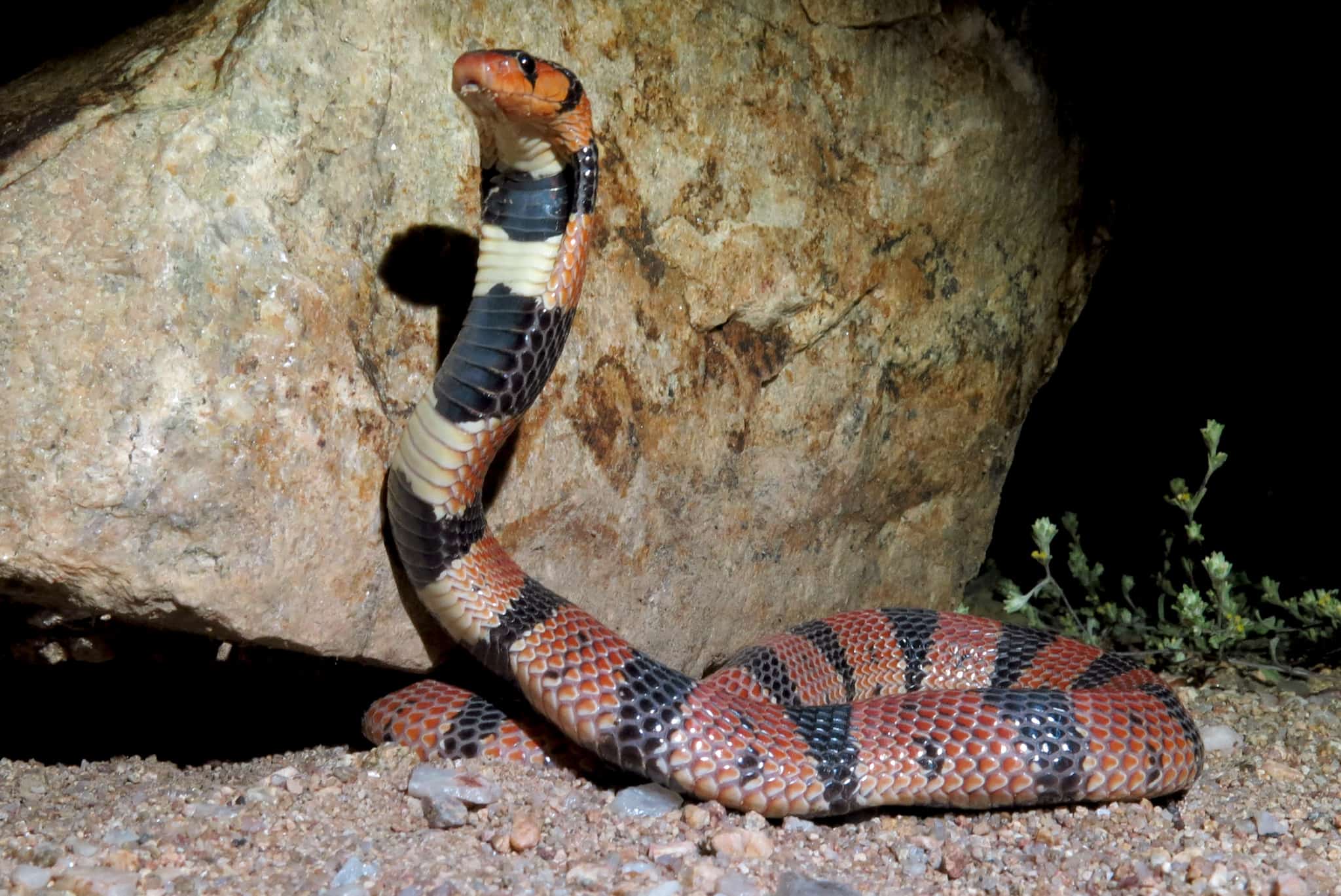
It was only 3 month before another venomous snake made a bid for freedom in the Netherlands. The missing snake was an African shield-nosed cobra, residing in his owner’s terrarium in Lelystad. While not a true cobra, this close relative spews out a multitude of cytotoxins and neurotoxins.
Snake expert Walter Getreuer played down the risk: “It is a defensive species. At more than a meter from the animal there is absolutely nothing going on“. Nevertheless, a human fatality was confirmed in Namibia just the previous month (Jan 2024). Traps were installed in the neighbourhood, and sniffer dogs were recruited, including snake-hunting dogs specifically trained by Getreuer. Residents were warned in a 300 metre radius around the owner’s house, advising them to keep windows and doors closed, and keep their pets on a leash.
Getreuer wisely sprinkled flour around the house to reveal any slithery imprints. He thought it would still be in residence, but he was wrong: the shield-nose cobra was found exactly 1 month later in a different house in the street. It was weakened by the cold, but mostly healthy, and was placed in a transparent box, while first responders posed for photos, and the grateful owner walked a short distance from his house. Apart from its life-ending venom, this cobra cousin makes for a decent pet as it can live up to 28 years.
| 7 | Tiger rattlesnake, Georgia |
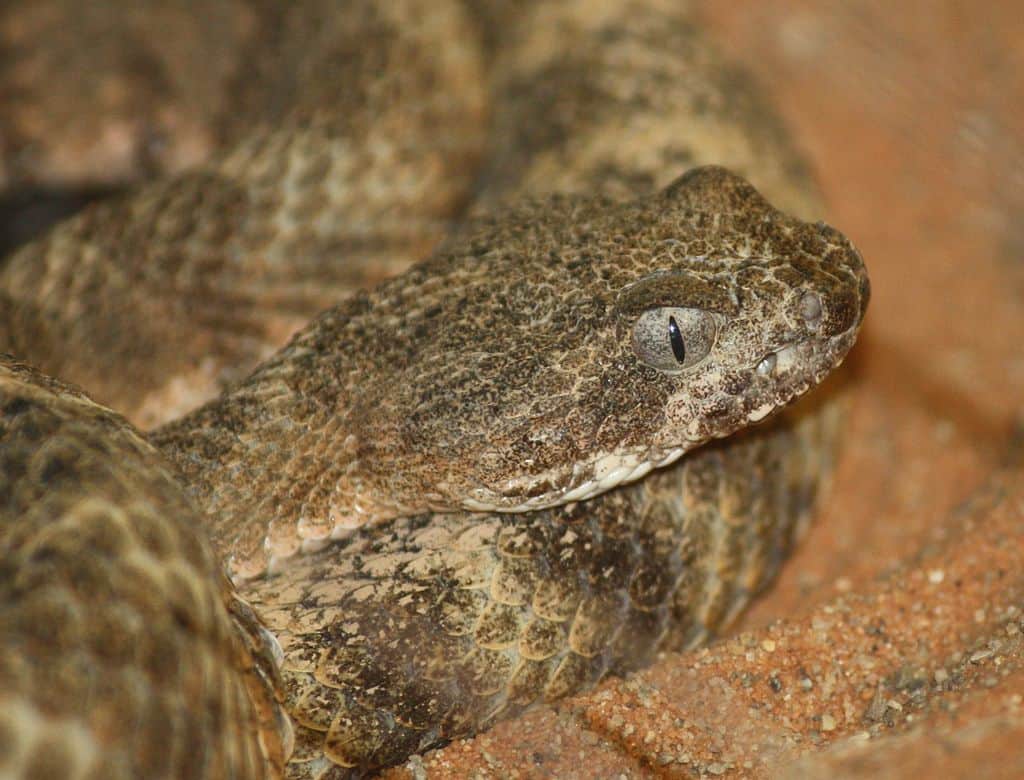
This zoo occupant had a strange life, as it was originally confiscated from a shipment of illegally imported snakes by the Department of Fish and Wildlife. The rattlesnake was then donated to Zoo Atlanta, in Georgia’s largest city. After carefully examining its surroundings, the rattlesnake vanished from its cage in late August 2010, provoking a frantic search in the nearby Grant Park.
Tiger rattlesnakes (Crotalus tigris) rank among the deadliest of the 50+ member family, as they’re one of the few to be primarily neurotoxic, disconnecting human brain signals. This particular snake measured 60cm, and was declared absent during a routine check by zoo staff. Sadly, this story had a tragic end. The tiger rattlesnake ended up being bludgeoned to death by a nearby property owner, after invading their house.
Zoo Atlanta admitted fault, confessing that rather than the escapee being a slithery Houdini, they hadn’t secured the door properly. In early September, an inspection team from Georgia Department of Natural Resources was dispatched to investigate the facility, and decide whether to impose fines.
| 8 | Monocled cobra, Germany |
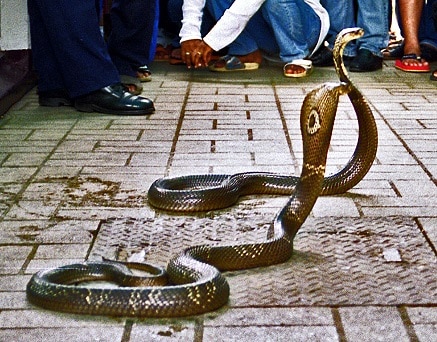
Our next tale took place in August 2019, in the western German city of Herne. The species was a monocled cobra, the signature cobra of Thailand, and one capable of killing humans via respiratory failure.
The owner raised the alarm that his beloved venomous pet had gone missing. When police opened the man’s door and turned on the lights, they found an additional 20 venomous snakes. These were confiscated, but the original cobra was still roaming loose. The first clue was a shed snake skin near the cellar. Police searched nearby corridors and air vents, and used the tried and tested method of spreading flour, to reveal slither imprints.
Locals were advised to avoid walking through high grasses, and four buildings connected by the cellar were evacuated in the block, turning 30 people into temporary refugees. Typical Germany efficiency came into force as medical personnel were standing around on standby, carrying vials of antivenom, just in case. The snake measured over 130cm.
Finally, the cobra was captured after 5 days on the loose. It was found at the entrance to the basement, perhaps growing more frustrated as its attempts to gain entry and access the delicious rats inside were foiled. The shed skin was probably from a previous attempt to enter.
| 9 | 11 Habus, Japan |
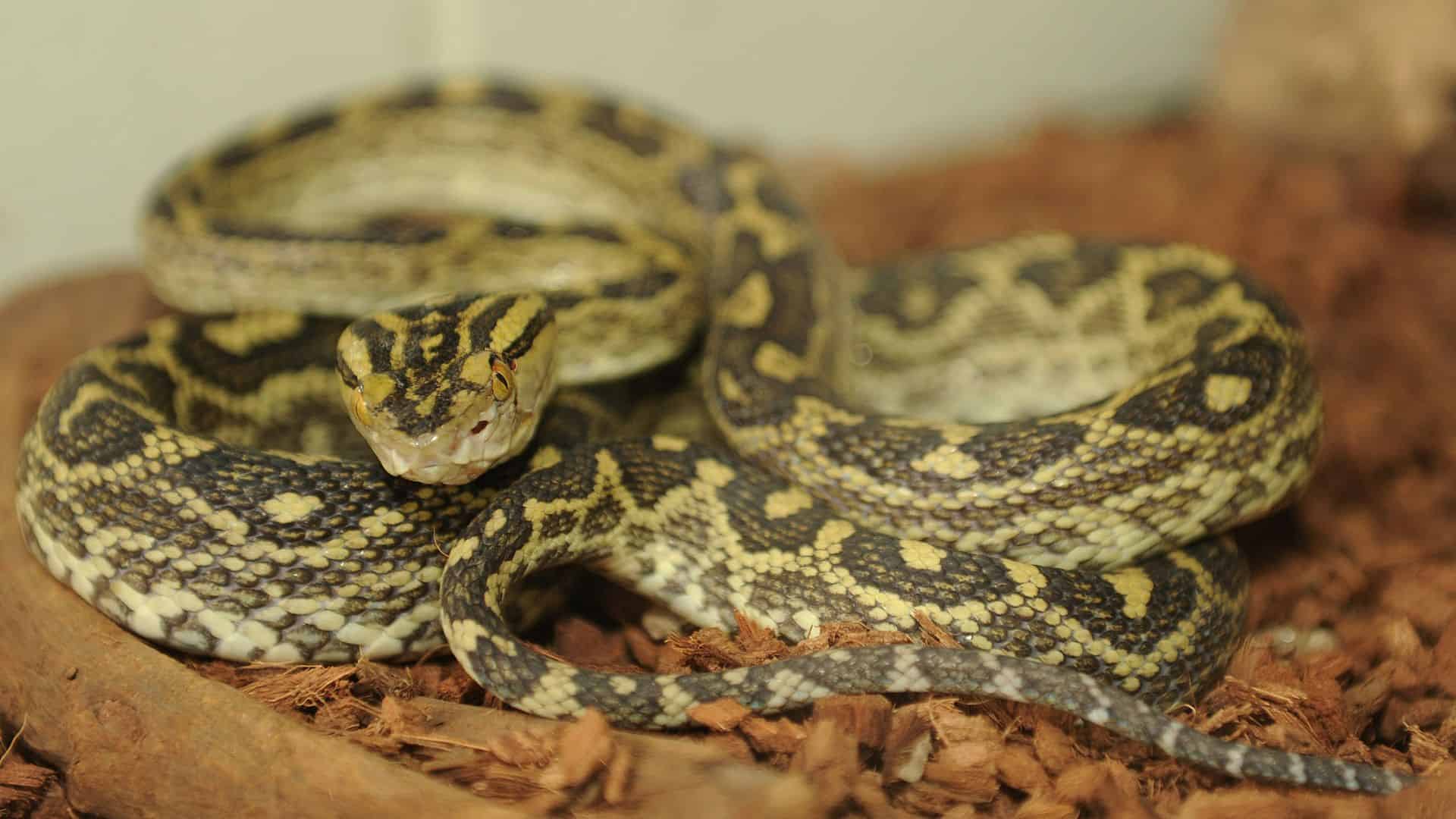
The Habu is Japan’s most feared snake, and is more than capable of inflicting death via kidney failure. In November 2023, visitors to a “habu house” got more than they bargained for. The location was Amagi on Tokunoshima island, a volcanic island in Japan’s southerly Ryukyu archipelago. On Friday morning, tourists eagerly entered the enclosure, but noticed a habu on the floor, outside the cage. This was immediately captured, but zoo staff soon inspected to find just 5 vipers inside the enclosure rather than the intended 16.
The cage had a valve which opened during cleaning to let water out. The zoo admitted that this valve had been left open, and the resident snakes were intelligent enough to notice. 2 escapees were captured immediately, leaving 9 free. 20 employees were soon scouting the town of Amagi for the escaped habus.
The upside was that habus are relatively lazy and stick to a 200 metre radius – the downside is that their camouflage allows people to step on them. The goal was to prevent Tokunushima from going from an inviting tourist island to a terrifying snake island. 9 habus were captured by Sunday, and whether they ever captured the final 2 is difficult to find out.
| 10 | Banded sea krait, UK |
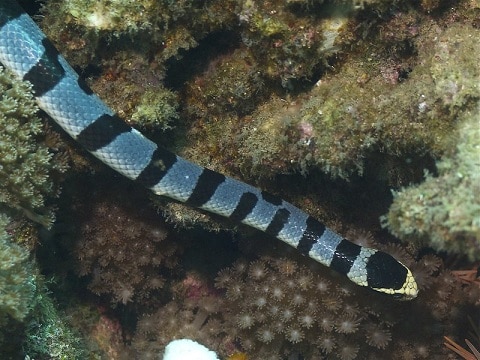
Our next story is a little different, as it’s the only to involve a sea snake. It occurred in July 2004 and involved a yellow-lipped sea krait, AKA the banded sea krait. This creature is a mixed bag – calm and peaceful, yet capable of paralysing human limbs and lungs in tiny dosages.
During a special venom exhibition, at the Sea Life Centre in Norfolk, the sea snake absconded from its water tank. This was the first time sea snakes had gone on public display in Britain, and it didn’t go well.
The snake was “on the run” for 24 hours, although it was actually swimming. Fiona Smith, 22, engaged in a daredevil rescue operation. She put on waders and 5mm thick gloves, specifically designed to combat the sea snake’s 3mm fangs. “We had a very thorough emergency protocol in place for an event like this” she said.
Fortunately, the sea snake didn’t invade nearby towns and came out of anybody’s tap as they turned the nozzle. It got no further than the adjacent quarantine tank. Employees managed to attract the snake by placing a warm mat inside the watery chamber, luring it from a cold corner of the room. They later discovered the cause, stripping down the entire sea snake tank, and discovering a tiny hole above the waterline, a fault in the original construction. Snakes will exploit any opening you give them.
